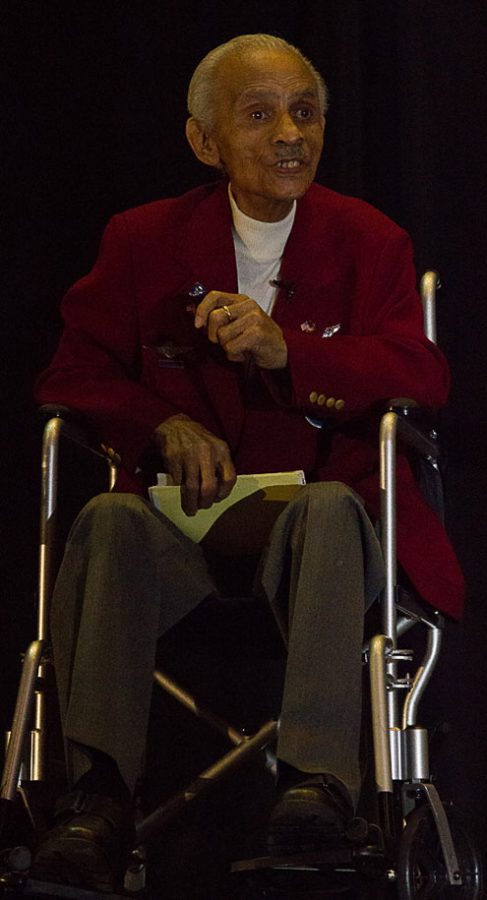Social prejudice and individual determination were the focus of conversation for Col. Herbert Carter, an original member of the 99th Squadron and the Tuskegee Airmen, on Wednesday in the Ferguson Center Theatre.
The Black Faculty and Staff Association of the University of Alabama hosted the event “An Evening with a Red Tail” that addressed the physical, psychological and social obstacles the Tuskegee Airmen faced during the 1940s.
The Tuskegee Airmen were a group of 18- to 26-year-olds who served as the nation’s first black military airmen during World War II. Before and after successfully serving in the United States Air Force, these pilots had to overcome racial segregation and prejudice.
“These men were the foundation of the Civil Rights Movement,” said Col. Roosevelt Lewis, a 26-year veteran of the United States Air Force, Tuskegee University graduate and guest speaker for the night. “Before Martin Luther King, before Rosa Parks, there were the Tuskegee Airmen that excelled in what they never thought they’d do before.”
Carter left his rural hometown in Mississippi to play football for the former Tuskegee Institute. He became interested in flying after the Civilian Pilot Training Act was instated by President Franklin Roosevelt, encouraging universities to train qualified students to receive their pilot’s license.
Tuskegee, a historic black university, was among the several universities included in the program. However, the military was not prepared to include black members among its ranks.
“No commander from Burma to England wanted an all-black fighter squadron,” Carter said. “They said it would cause problems. No one wanted to take orders from a black commander.”
The men were finally accepted into the war as close tactical ground support for the allied forces in North Africa and Italy. Carter’s 99th Squadron flew in air-to-air combat for the first time against the German Luftwaffe over Anzio Beach, Italy in 1944. They shot down 18 German planes, transforming the racial boundaries within the United States military.
“They could no longer use the myth that the black man couldn’t fly or fight,” Carter said. “They said the black man was lazy, lackadaisical and had neither the physical or psychological qualities of a leader. But what a great day that was.”
The Tuskegee Airmen ultimately achieved their goal of the desegregation of the armed forces with President Harry Truman’s Executive Order 9981. However, America continued segregation years after the men returned from war.
“It was interesting to see how large of an effect Col. Carter and the Tuskegee Airmen had on the military,” said Connor King, a sophomore in the UA Air Force ROTC program. “They really influenced the whole system.”
Today, Carter can see the progress from the changes his squadron encouraged.
“Now, the armed forces are the most diversified group of people you’ve ever seen in your life,” Carter said. “The pigmentation of your skin or the coarseness of your hair doesn’t matter. If you’re human, if you’re alive and breathing, if you pass the test, you can join the military.”
However, he promotes determination and hard work to become successful.
“If you don’t take opportunities and capitalize on them, your life will be no better than the preparation it took you to get there,” Carter said.







